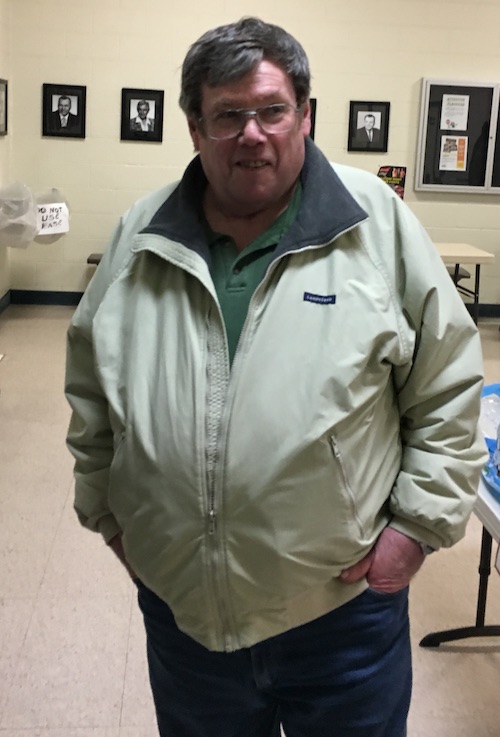Hayden McClure didn’t know he had
cancer – didn’t know he was even at risk – until he took the test offered by
the Building Trades National Medical Screening Program. It saved his life.
McClure, a member of Anchorage, Alaska, Local 1547, worked on a Department of Energy site at Amchitka Island that qualified him for the free medical screening. The program is supported by North America’s Building Trades Unions and CPWR — The Center for Construction Research and Training and is available to anyone who has worked on a Department of Energy site.
“If it hadn’t been for BTMed, I would have stumbled over to my doctor and never said anything about being at Amchitka where I was exposed, because I wouldn’t have known I had to,” said McClure who worked at the site on the Aleutian Islands in southwest Alaska decades ago.

|
| Anchorage, Alaska, Local 1547 member Hayden McClure didn’t know how much working at Amchitka Island affected his health until got the free Building Trades Medical Screening.
|
People who worked on DoE sites including Hanford in Washington, Oak Ridge in Tennessee and Savannah River in South Carolina, may have been exposed to materials including asbestos, silica, beryllium, mercury, radiation, lead or other heavy metals. Further information can be obtained on the BTMed site, including a map of covered sites.
More than 25,000 construction workers have been tested, said Chris Cain, CPWR's executive director.
“If they’ve worked at any of these sites and had any exposure, or have experienced any medical ailments, they should get tested, just to be sure,” said Dan Gardner, an international representative in the IBEW Safety Department.
While at Amchitka, one of more than 30 work sites covered by BTMed, McClure worked as an equipment operator digging trenches for telephone and power cables. His safety orientation mentioned that the department, then known as the Atomic Energy Commission, organized underground nuclear weapon tests there in the 1960s and 1970s, but maintained at the time he was working that there wasn’t anything to worry about, McClure said. They also neglected to give him any protective equipment.
“All they gave us was rain gear,” McClure said. “The government, when they came out there to do the monitoring of their test wells, wore contamination gear.”
It wasn’t until 2003 that McClure got a notice about the screening opportunity, he said. He initially ignored it, but says his wife convinced him otherwise. Thanks to the testing, he got answers to the ailments he’d starting suffering from, like his feet getting so cold in July that he wore winter boots, which he learned was due to nerve damage.
McClure was eventually diagnosed with cancer of the spine and hip, POEMS syndrome, a rare blood disorder, and Castleman disease, another rare disorder involving an overgrowth of cells. After multiple treatments including radiation and stem cell treatment, he’s now cancer-free.
“I’m alive today because of the screening,” McClure said. “Without it, I probably would’ve died. The cancer and everything was eating me up fast.”
The screening consists of two parts, a work history interview and a medical exam. The interview determines your exposure risk to hazardous materials and can be conducted in person, online or by phone. The medical exam is done by a doctor familiar with construction work and trained to look for certain issues, like beryllium or silica exposure.
Some members may be eligible for monetary compensation, in which case the program will help people file the proper paperwork and refer those eligible to the Department of Labor, which oversees the compensation.
“If you worked just one day, you should get the screening,” Cain said. “I’ve talked to a lot of people who didn’t know there was anything wrong with them until they got screened.”
For those who may be eligible, call 1-800-866-9663 or go to btmed.org for more information.